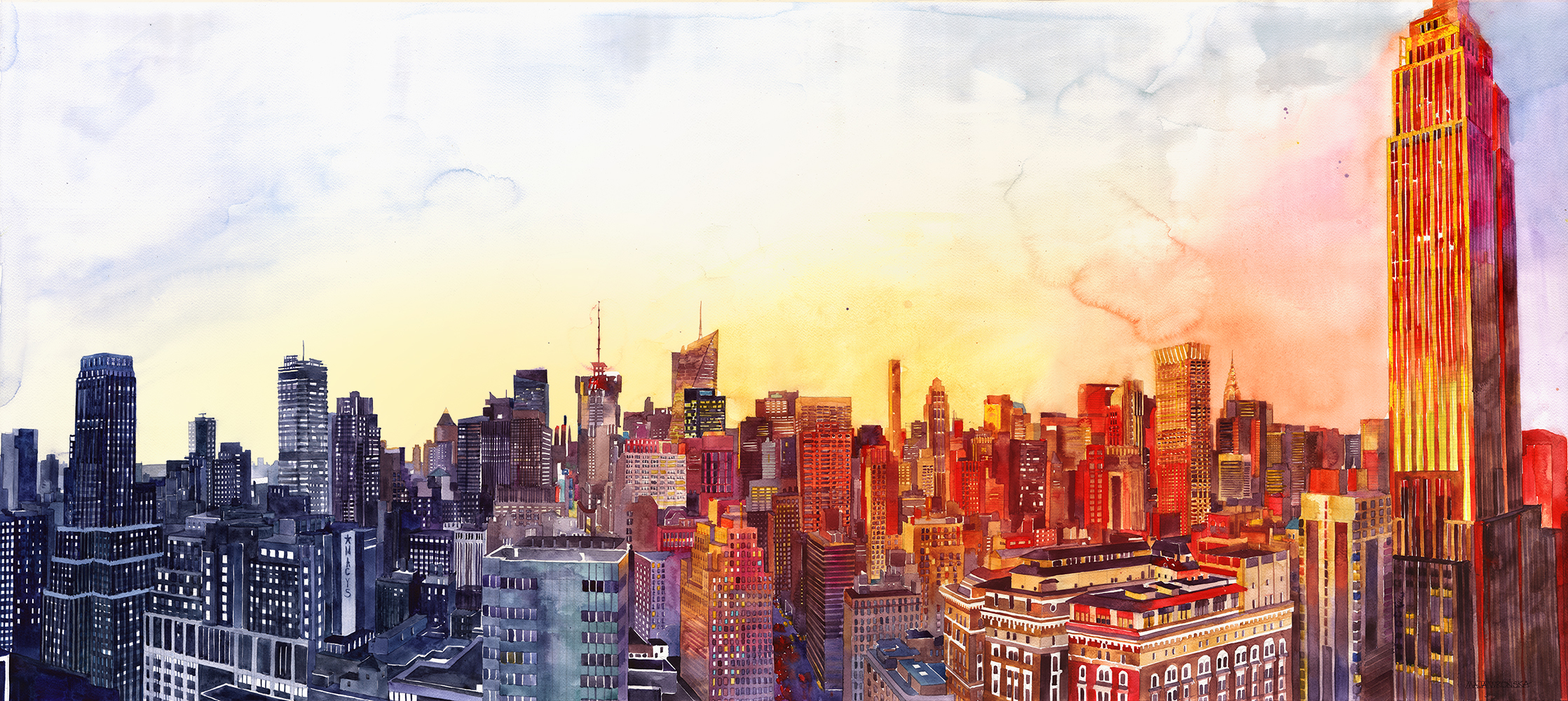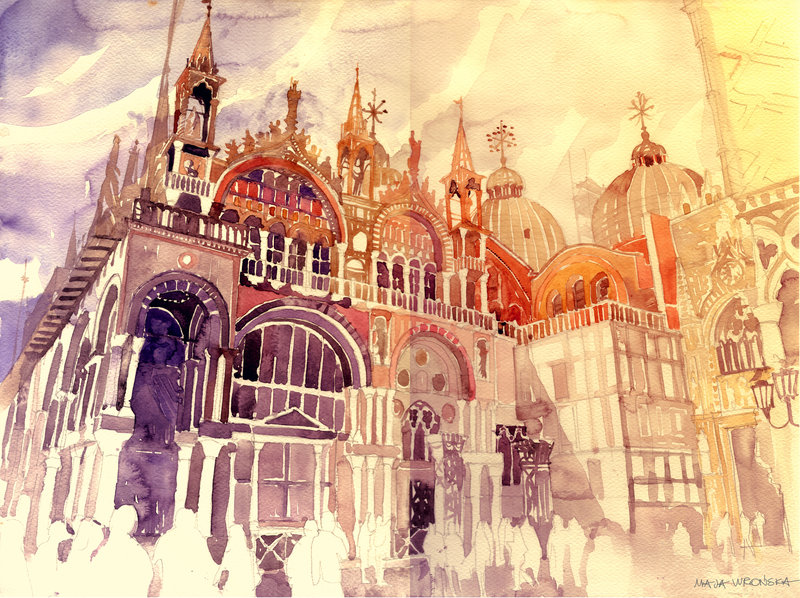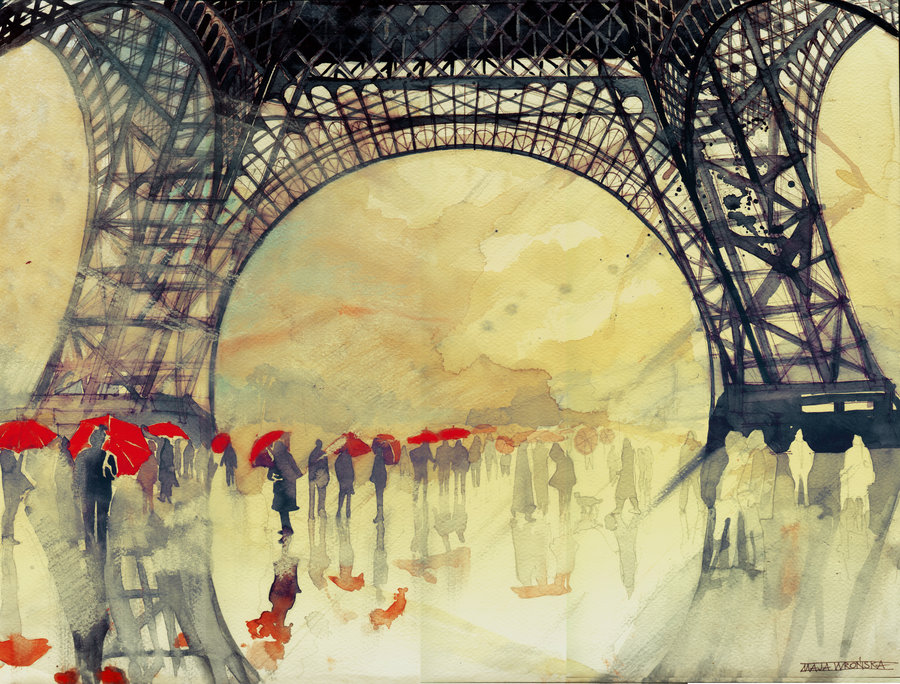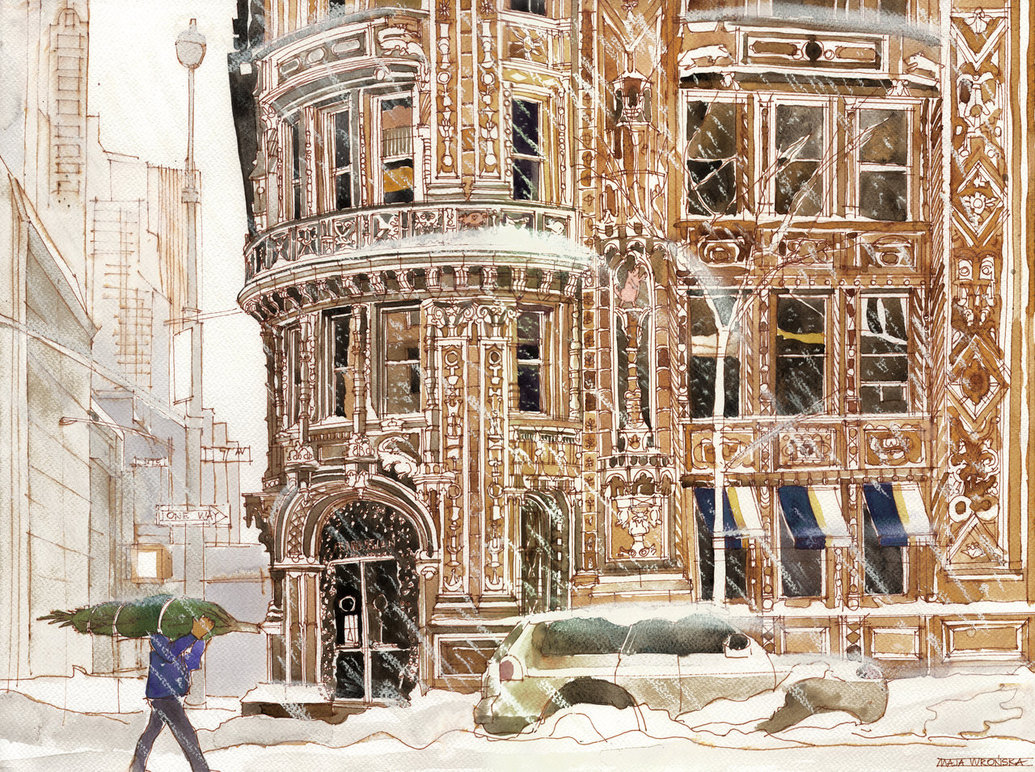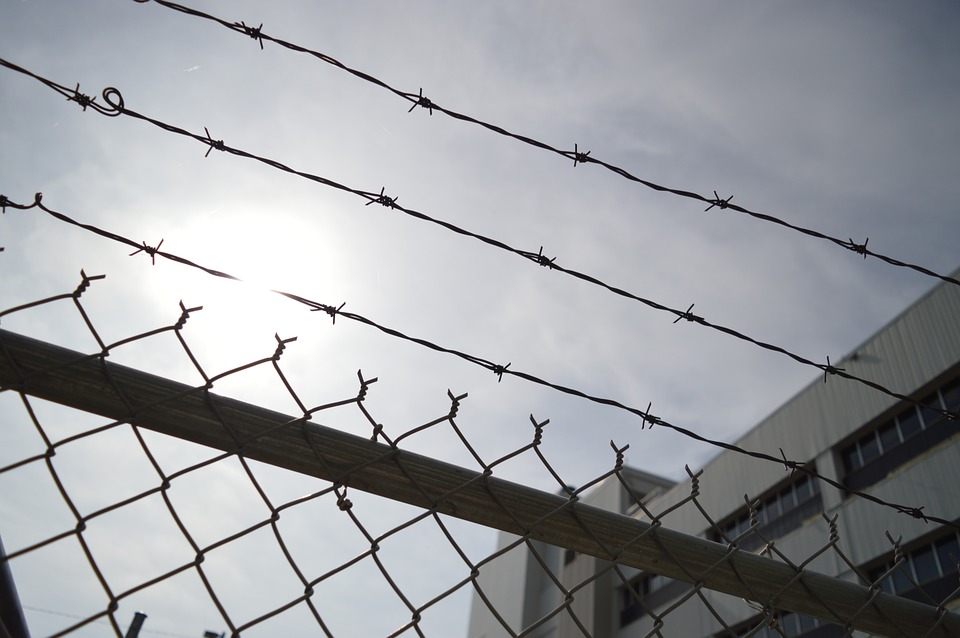Maja Wrońska is an architect and freelance illustrator who creates magnificent and vibrant, watercolor illustrations of European architecture. As an architect and an artist, she balances the the elements of drawing and perspective in her work including dramatic and detailed use of line and pastel watercolors. Preferring to paint “once inspiration hits” and enjoying the unbridled feeling the accompanies creating a work with no limits or boundaries she is an inspiration to many choosing to cultivate a creative skill.
Impakter had the opportunity to interview Maja on where she draws her influences, her artistic technique and the challenge creatives face being defined solely by their craft.
Where did it all start? Is there a story behind how you became an artist?
Maja Wronska: I started drawing as soon I could hold a pencil, I was probably around a year old. My mom is an architect, and when she first started, all architectural drawings were made by hand; she had millions of professional drawing tools, which I could use freely. It is because of her that my adventure with drawing started at such a young age.
What attracted you to watercolors and how would you describe your style?
M.W.: For many years I used different drawing techniques, using crayons, markers, pencils, watercolors, oil pastels, acrylics and more. I mostly like to paint and watercolors are my first choice because they are neat, clean and easy to start. In comparison with others, painting with acrylics, for example, is more complicated. It includes preparing the palette, the canvas, cleaning brushes, waiting for paint to dry etc. Painting with watercolors is a much simpler method of art. I am not a patient person so when I want to paint, I want to do it all at once. Watercolor is, therefore, the perfect choice.
Photo Credit: Maja Wrońska
Yet, painting with watercolors requires a complex technique: a light touch and dexterous control.
M.W.: Yes, I like the unpredictability of watercolors; once it’s painted, it stays that way. You can’t put a white layer over it and cover it with paint to try again. Of course, you can try to cover it with a dark and thick paint but the painting won’t look as fresh and neat as it would if only painted once.
As soon as inspiration hits I have an urgent need to paint.
Do you have a particular drawing technique?
M.W.: The sketch under the watercolor painting is much more simplistic, I skip a lot of details and add them later by drawing with paint and brush. I just have to keep a good ratio between elements of the drawing and its perspective. It’s usually a simple half an hour sketch to keep the proportions and remembering to paint all parts.
Photo Credit: Maja Wrońska
Some of your paintings are of well-known places in Paris, Spain, and other European countries. We know that writers, for example, don’t necessarily have to visit all countries they write about. How do you work as a painter? Does inspiration come purely from your travels?
M.W.: When I was younger, I spent a lot of time painting from my imagination. I made up all the places and cities I painted. As an adult, I have visited Italy, Spain, and Greece, but I haven’t seen all the places I have painted. To be honest, I’m the type of person who loves sunbathing during my holidays.
Related article: “TRANSFORMING ART WITH ALEXA MEADE”
However, as an architect, I have a good imagination, and it’s easy for me to capture any place to look real in paint. I have a lot of my own photos, but I’ve also collected a huge photo database from my family and friends.
When I don’t have any great photos of a particular place, I search for free photos or buy rights from professional photographers. Sometimes my clients send me their photos or I ask non-professional photographers if I can use their photos to paint from. By using social media to promote my work, a lot of people share photos asking me to paint their cities. I also do a lot of commissions and clients usually want me to paint a particular city, place or building related to their lives, so it’s difficult to paint real places without proper reference.
Photo Credit: Maja Wrońska
That question brings us straight to inspiration; Where do you find your inspiration and is there something in particular you would like to express?
M.W.: I don’t consider what I want to express when I paint. When I paint for myself I paint what I like, when I like, and that makes me happy. As soon as inspiration hits I have an urgent need to paint. I get it usually after watching some awesome animated movies, like “Kung Fu Panda”, or other visual effects I see in movies. Most of my best works were created this way. When I do a commission, it usually turns out better when the client tells me the subject and leaves me open minded without unnecessary restrictions. If he or she wants to decide how I should paint something I’m not fully free to show how I feel about the place or the building that is the topic of the work and I’m usually not happy with the result.
Photo Credit: Maja Wrońska
What challenges have your met during your career as an artist and how do you manage them?
M.W.: My biggest challenge is combining working as an architect and painter. I don’t necessarily want to be defined as an artist. I recently passed the final architect exam and obtained the unlimited building design license, so I can say that I am a real architect now. I am a huge fan of creating architectural visualization with digital software.
How do you see the future?
M.W.: I have already started to create drawings with my husband Przemysław Sobiecki for a coloring book that combines designing architecture and drawing. I’ve also recently painted a panorama of New York and it was quite popular on my social media. I’m planning to paint more panoramas because large paintings make me really happy.
Recommended reading: “DIGITAL TECHNOLOGY IS TRANSFORMING THE ART WORLD“


